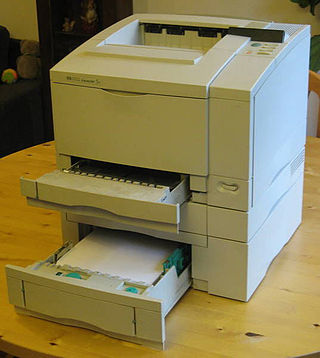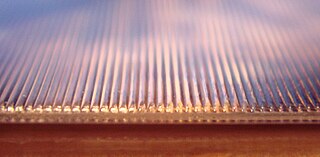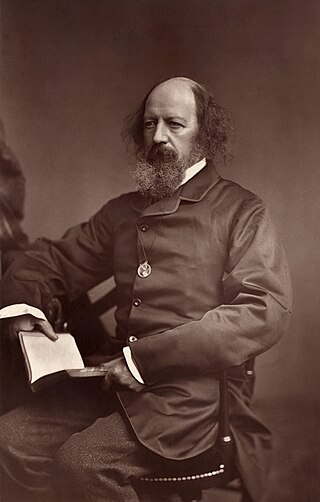Related Research Articles

In computing, a printer is a peripheral machine which makes a durable representation of graphics or text, usually on paper. While most output is human-readable, bar code printers are an example of an expanded use for printers. Different types of printers include 3D printers, inkjet printers, laser printers, and thermal printers.

Inkjet printing is a type of computer printing that recreates a digital image by propelling droplets of ink onto paper and plastic substrates. Inkjet printers were the most commonly used type of printer in 2008, and range from small inexpensive consumer models to expensive professional machines. By 2019, laser printers outsold inkjet printers by nearly a 2:1 ratio, 9.6% vs 5.1% of all computer peripherals.

Holography is a technique that enables a wavefront to be recorded and later reconstructed. It is best known as a method of generating three-dimensional images, and has a wide range of other uses, including data storage, microscopy, and interferometry. In principle, it is possible to make a hologram for any type of wave.

Stereoscopy is a technique for creating or enhancing the illusion of depth in an image by means of stereopsis for binocular vision. The word stereoscopy derives from Greek στερεός (stereos) 'firm, solid' and σκοπέω (skopeō) 'to look, to see'. Any stereoscopic image is called a stereogram. Originally, stereogram referred to a pair of stereo images which could be viewed using a stereoscope.

Security printing is the field of the printing industry that deals with the printing of items such as banknotes, cheques, passports, tamper-evident labels, security tapes, product authentication, stock certificates, postage stamps, and identity cards. The main goal of security printing is to prevent forgery, tampering, or counterfeiting. More recently many of the techniques used to protect these high-value documents have become more available to commercial printers, whether they are using the more traditional offset and flexographic presses or the newer digital platforms. Businesses are protecting their lesser-value documents such as transcripts, coupons and prescription pads by incorporating some of the features listed below to ensure that they cannot be forged or that alteration of the data cannot occur undetected.

Lenticular printing is a technology in which lenticular lenses are used to produce printed images with an illusion of depth, or the ability to change or move as they are viewed from different angles.

A 3D display is a display device capable of conveying depth to the viewer. Many 3D displays are stereoscopic displays, which produce a basic 3D effect by means of stereopsis, but can cause eye strain and visual fatigue. Newer 3D displays such as holographic and light field displays produce a more realistic 3D effect by combining stereopsis and accurate focal length for the displayed content. Newer 3D displays in this manner cause less visual fatigue than classical stereoscopic displays.
A volumetric display device is a display device that forms a visual representation of an object in three physical dimensions, as opposed to the planar image of traditional screens that simulate depth through a number of different visual effects. One definition offered by pioneers in the field is that volumetric displays create 3D imagery via the emission, scattering, or relaying of illumination from well-defined regions in (x,y,z) space.

3D printing or additive manufacturing is the construction of a three-dimensional object from a CAD model or a digital 3D model. It can be done in a variety of processes in which material is deposited, joined or solidified under computer control, with the material being added together, typically layer by layer.
The science of photography is the use of chemistry and physics in all aspects of photography. This applies to the camera, its lenses, physical operation of the camera, electronic camera internals, and the process of developing film in order to take and develop pictures properly.

A carbon print is a photographic print with an image consisting of pigmented gelatin, rather than of silver or other metallic particles suspended in a uniform layer of gelatin, as in typical black-and-white prints, or of chromogenic dyes, as in typical photographic color prints.
A vectograph is a type of stereoscopic print or transparency viewed by using the polarized 3D glasses most commonly associated with projected 3D motion pictures.

A raised-relief map, terrain model or embossed map is a three-dimensional representation, usually of terrain, materialized as a physical artifact. When representing terrain, the vertical dimension is usually exaggerated by a factor between five and ten; this facilitates the visual recognition of terrain features.

3D computer graphics, sometimes called CGI, 3-D-CGI or three-dimensional computer graphics, are graphics that use a three-dimensional representation of geometric data that is stored in the computer for the purposes of performing calculations and rendering digital images, usually 2D images but sometimes 3D images. The resulting images may be stored for viewing later or displayed in real time.

Rapid prototyping is a group of techniques used to quickly fabricate a scale model of a physical part or assembly using three-dimensional computer aided design (CAD) data. Construction of the part or assembly is usually done using 3D printing or "additive layer manufacturing" technology.

Security holograms are labels with a hologram printed onto it for sale security reasons.

In 3D computer graphics, 3D modeling is the process of developing a mathematical coordinate-based representation of a surface of an object in three dimensions via specialized software by manipulating edges, vertices, and polygons in a simulated 3D space.

Binder jet 3D printing, known variously as "Powder bed and inkjet" and "drop-on-powder" printing, is a rapid prototyping and additive manufacturing technology for making objects described by digital data such as a CAD file. Binder jetting is one of the seven categories of additive manufacturing processes according to ASTM and ISO.

A variety of processes, equipment, and materials are used in the production of a three-dimensional object via additive manufacturing. 3D printing is also known as additive manufacturing, because the numerous available 3D printing process tend to be additive in nature, with a few key differences in the technologies and the materials used in this process.
Volumetric capture or volumetric video is a technique that captures a three-dimensional space, such as a location or performance. This type of volumography acquires data that can be viewed on flat screens as well as using 3D displays and VR goggles. Consumer-facing formats are numerous and the required motion capture techniques lean on computer graphics, photogrammetry, and other computation-based methods. The viewer generally experiences the result in a real-time engine and has direct input in exploring the generated volume.
References
- ↑ "Kickstarter project lets you print eerie 3D x-rays". Wired UK . 2 June 2014. Retrieved 6 June 2014.
- ↑ "Best 3D Printers Reviews". 3D Printing Industry. 17 April 2014. Retrieved 29 October 2014.
- ↑ "And Now For Something Completely Different: Volumetric Printing". 3D Printing Industry. 1 June 2014. Retrieved 5 June 2014.